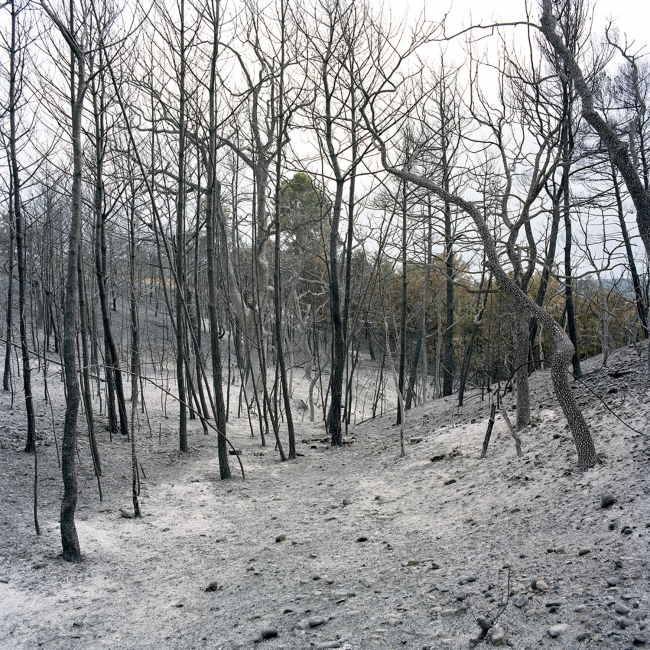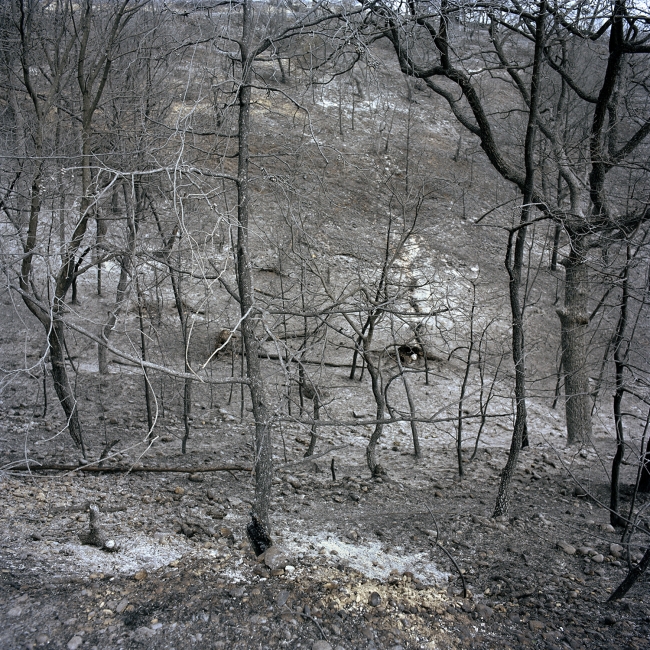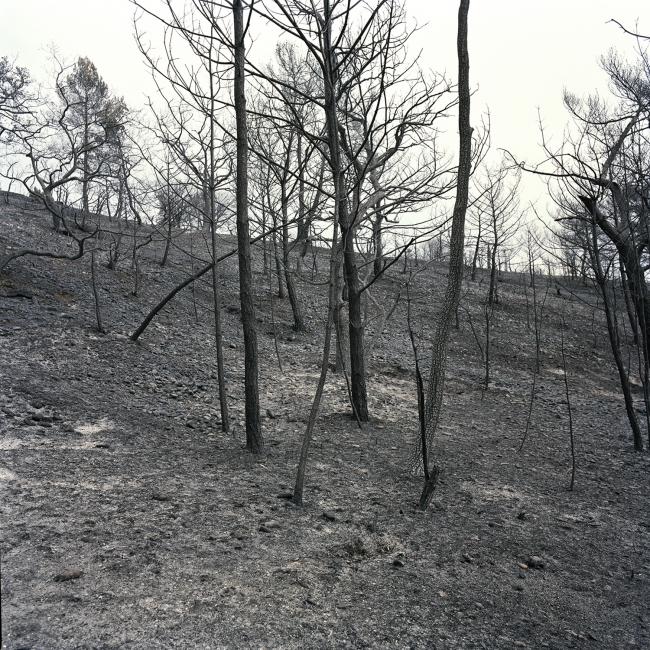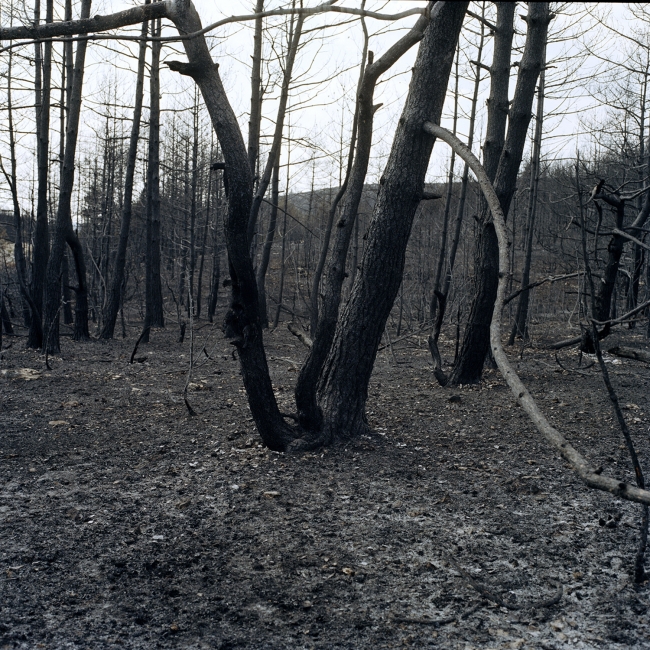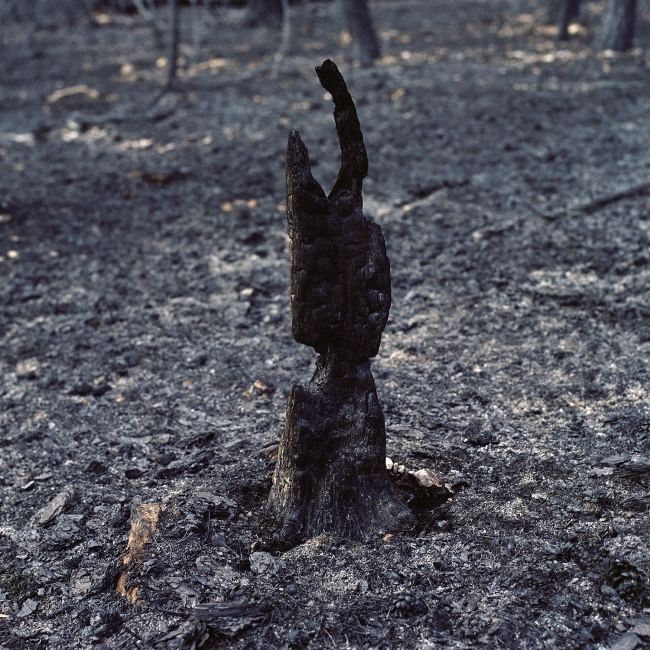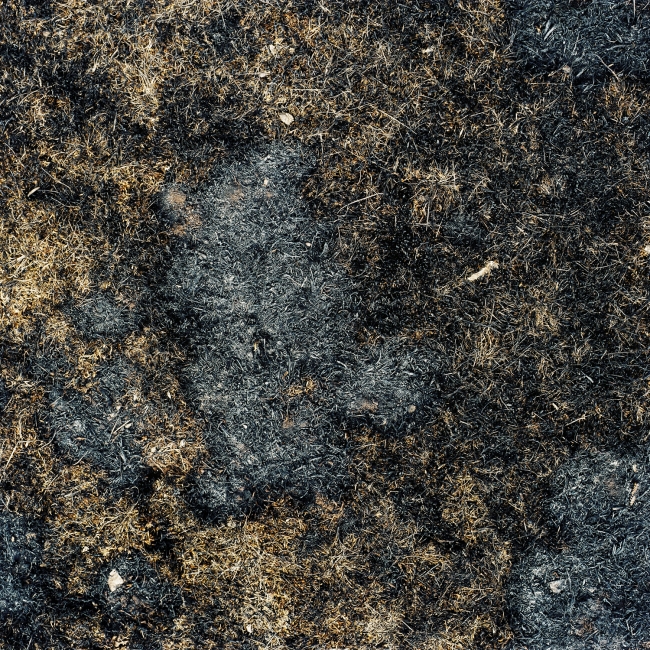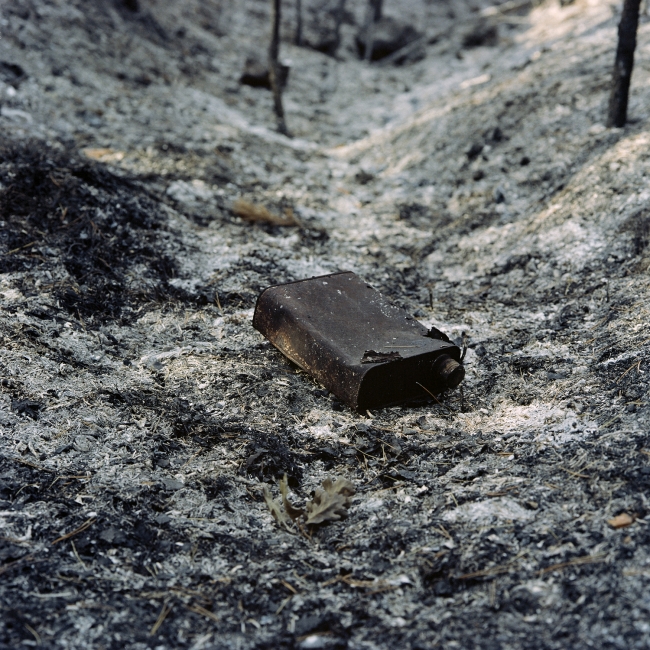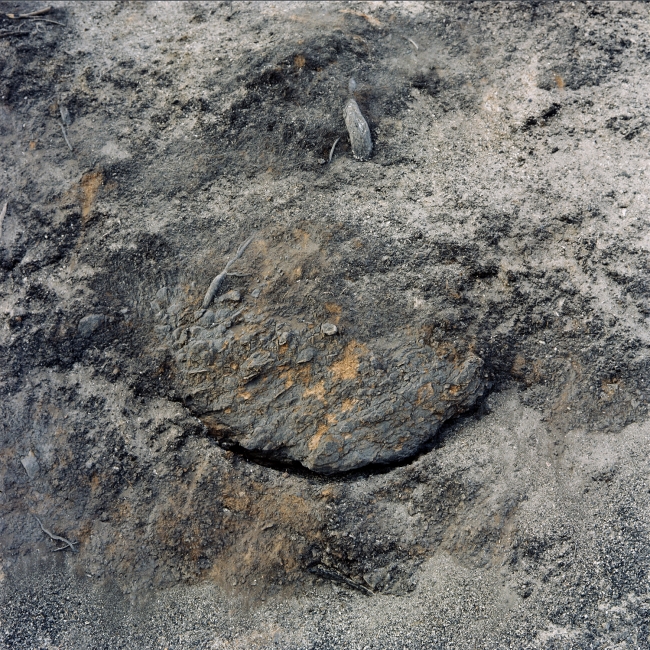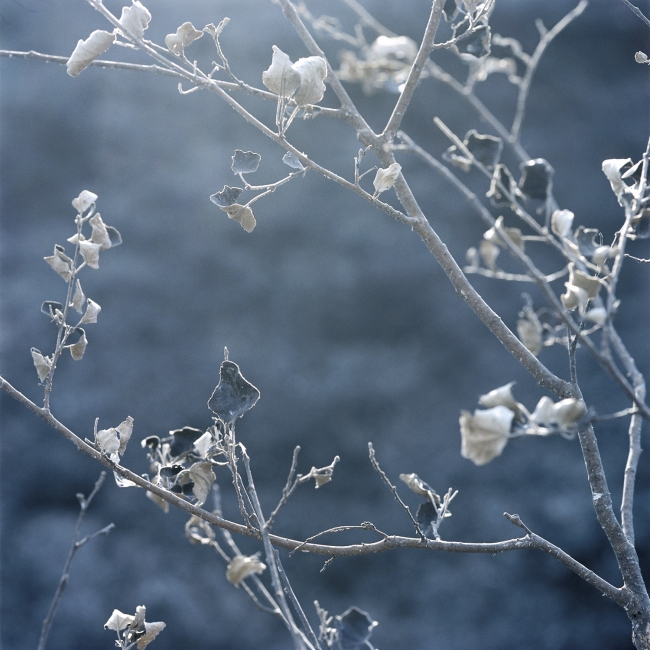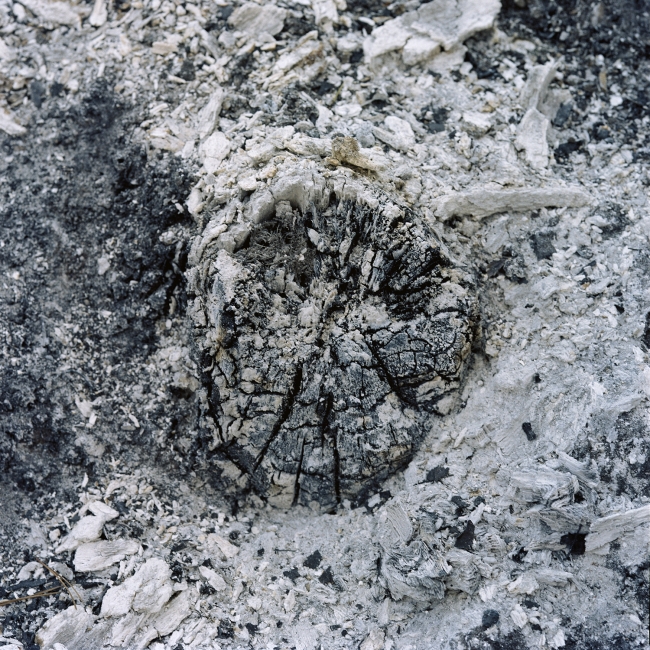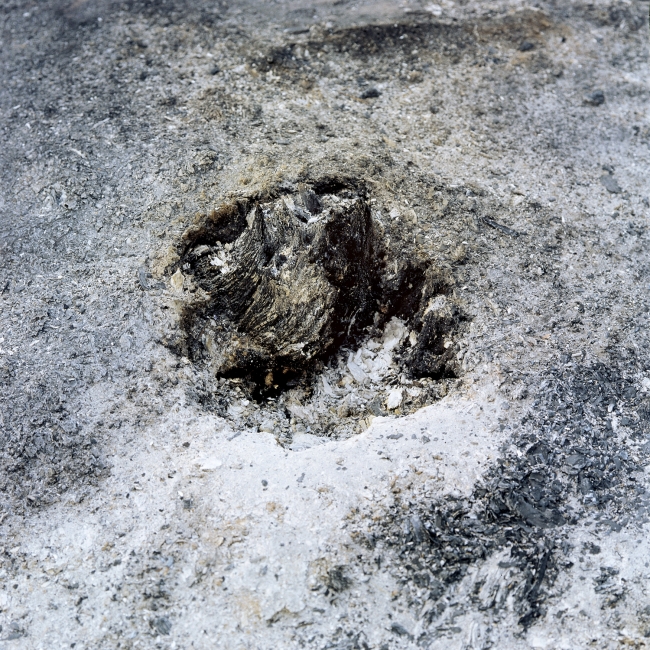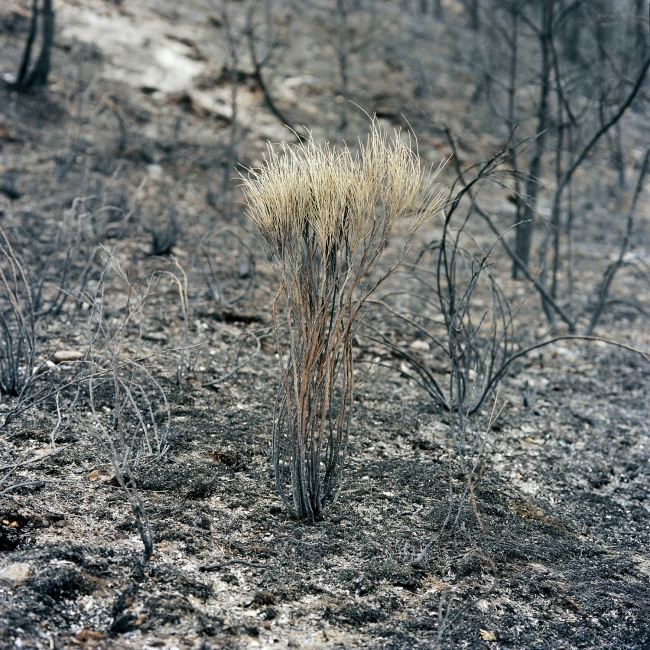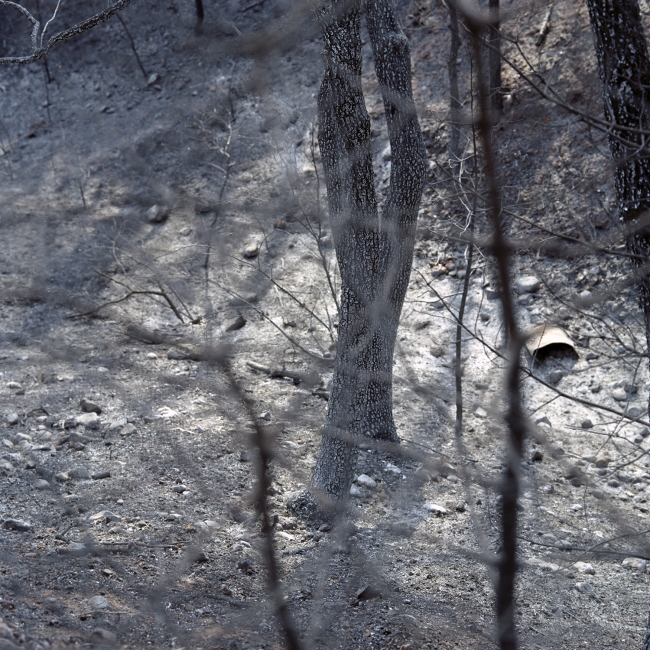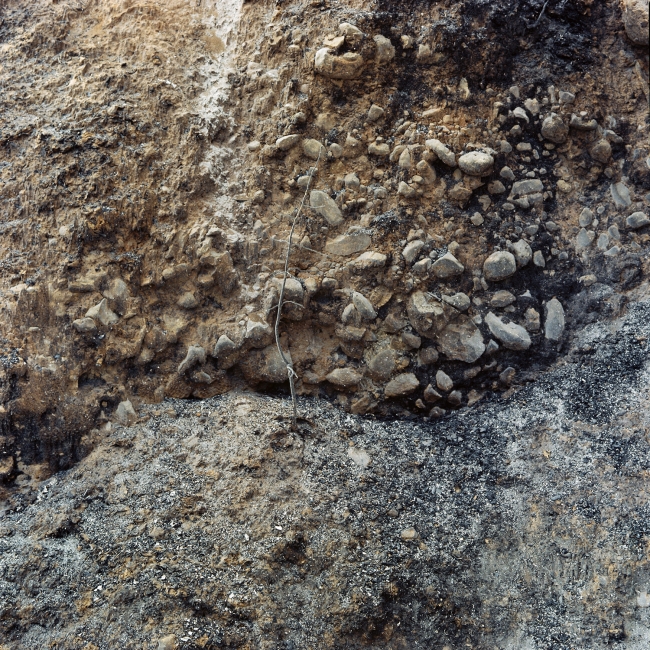« Juste retour de cendres » (J. Derrida, Feu la cendre, 1987).
If the things of art often begin in opposition to the things of life,
it is because the image, probably better than anything else, manifests that state of survival that belongs neither to life nor to death, but to a kind of state as paradoxical as that of spectres, which relentlessly set our memory in motion from within.
The image should be thought of as a living ash.
Nietzsche already asserted that « our entire world is the ashes of countless living beings ». – refusing, therefore, « to say that death is the opposite of life ».
Georges Didi-Huberman. The genius of the non-place
Fire is deadly, but it is also beautiful. After the fire, as in spring, « it is at this moment that we can best see the skeleton of the earth » (HJ). It is the language of geology. We finally see what was hidden, the layers of land and time, like a palimpsest, a memory in progress. It is epiphany, unveiling, revelation.
In China and Japan, it speaks with the ideograms of charred trunks against a white sky. It is also a sign of the times.
… Hervé Jézéquel speaks to us about all these motifs with assurance. The suffering of the earth, of the plants, these outstretched arms, these leaning totems, these stumps showing their guts, these trees supporting each other like father and son, these shattered stones that look like fossilised crabs, all claws out in the face of the spitting volcano, these tragic wheels of melted caravans. What were they doing there? Did its inhabitants have enough time? These tortured cans. Probably those of the arsonist. These Moebius ribbons that continue to wind. To where? Towards what infinity? These telephone poles that no longer communicate anything but the wind. And these indefinite, shapeless objects that beg to be renamed and looked at one last time. These are the most tragic, like the limp watches in Hiroshima. And yet, as in Hiroshima, like the ginko that resisted and was the first to emerge from the atomic inferno, Ima wa siro hi hana saaku, a yellow dragonfly on a charred shoot. A branch of holly. Plant certainty, animal certainty. Human certainty. Now is the time for fires. And just as well. With all these trees, we could no longer see the horizon, we could no longer see anything. We need to set fire to all the islands so we can see the sea again.
Patrick Prado, anthropologist, excerpts from « Incertains incendies » I
